Is 3-D Printing the Key to Cheap Carbon-Fiber Parts?
Someday, carbon fiber might live up to its hype and make all of our cars and airplanes more lightweight and efficient. Today, though, parts made of the material are very expensive, and are used mainly in race cars, high-end sports cars, and new jetliners. Some entrepreneurs are now betting that the key to making carbon-fiber parts much cheaper and more widely used is 3-D printing technology.
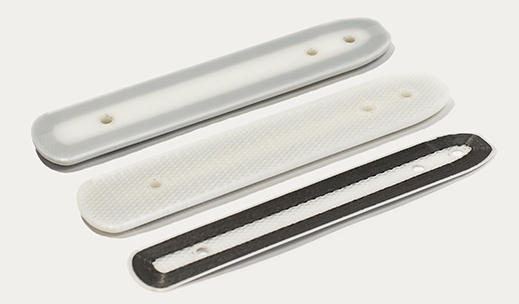
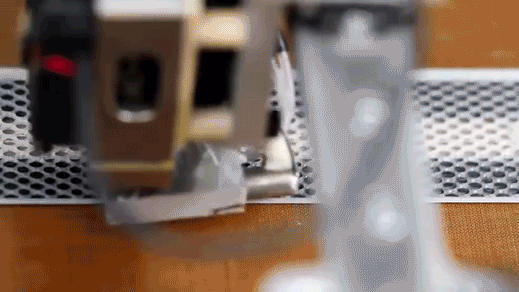
The benefits of carbon fiber are so great—parts made of it can be as strong as aluminum ones while weighing less—that “anyone who can afford it” is already using it in aerospace and automotive applications, says Greg Mark, CEO and founder of the Cambridge, Massachusetts-based startup MarkForged. But it’s too expensive for the mainstream, and a big reason for that is the way it’s made: a complicated, labor- and time-intensive process with many steps that must be done by hand (see “Where’s the Affordable Carbon-Fiber Automobile?”). Mark says the new process his company has developed is as simple as designing the part on the computer, pushing a button, and retrieving the part several hours later.
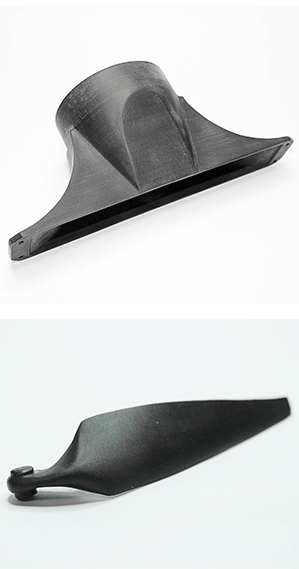
Bottom: A drone propeller made via the process Impossible Objects has developed.
The ability to print carbon-fiber parts will make 3-D printing much more useful for many industries, according to Robert Swartz, chairman, founder, and chief technology officer for Chicago-based startup Impossible Objects. Most of the plastic parts made using existing 3-D printing technologies don’t perform well enough to be used, say, in a drone. “There’s a real need for functionality,” says Swartz, and that requires better materials.
Technically, carbon-fiber parts are made of composite materials produced by precisely combining carbon fiber with a polymer. Making a carbon-fiber composite with a 3-D printer is challenging because carbon fiber is not conducive to conventional print heads. (As Mark puts it, the material “clogs the hell out of” them.)
MarkForged got around this by inventing a brand new “precursor” material that can be printed through a proprietary print head. The company’s first product, a printer called the Mark One, which costs $5,499, features the new print head as well as a second, more traditional one that extrudes a thermoplastic polymer. Each layer of a printed part contains a prescribed combination of thermoplastic and carbon fiber.
Impossible Objects developed a process that avoids the need to print carbon fiber. Instead, it begins with sheets of carbon fiber. On top of each sheet, an inkjet printer deposits a clear solution in a precise design, according digital instructions. Polymer powder is added, and it sticks to the printed design. The sheets are stacked and heated, causing the polymer to melt and bond to the fiber. A final sandblasting step removes the parts of the fiber sheets that aren’t bonded to the polymer. Impossible Objects makes parts to order, and is developing a machine it could sell to businesses that want to use the process to make their own parts.
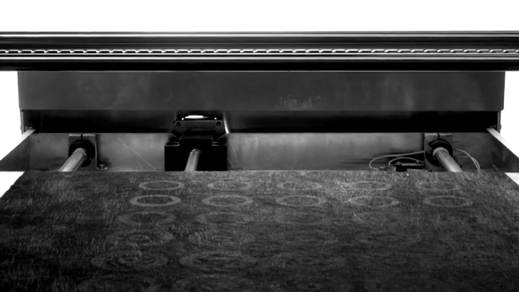
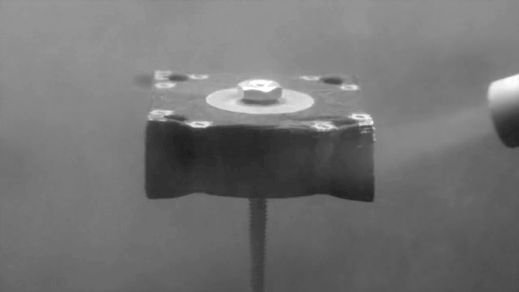
Keep Reading
Most Popular
Large language models can do jaw-dropping things. But nobody knows exactly why.
And that's a problem. Figuring it out is one of the biggest scientific puzzles of our time and a crucial step towards controlling more powerful future models.
The problem with plug-in hybrids? Their drivers.
Plug-in hybrids are often sold as a transition to EVs, but new data from Europe shows we’re still underestimating the emissions they produce.
Google DeepMind’s new generative model makes Super Mario–like games from scratch
Genie learns how to control games by watching hours and hours of video. It could help train next-gen robots too.
How scientists traced a mysterious covid case back to six toilets
When wastewater surveillance turns into a hunt for a single infected individual, the ethics get tricky.
Stay connected
Get the latest updates from
MIT Technology Review
Discover special offers, top stories, upcoming events, and more.